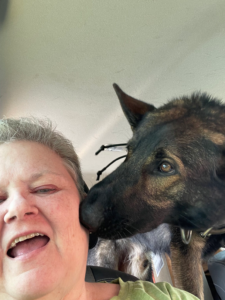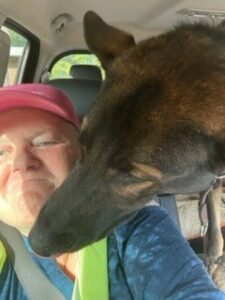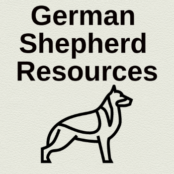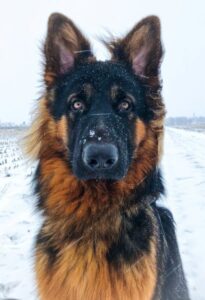Dog reactivity is a common issue where dogs overreact to certain stimuli such as other dogs, people, or objects. It can stem from fear, frustration, or lack of socialization. Addressing this requires patience, consistency, and positive reinforcement training to help your dog develop better coping skills.
Table of Contents
Introduction
Are you struggling with your dog’s outbursts on walks or around other dogs? You’re not alone. Dog reactivity is a common issue many dog owners face, but understanding it can make all the difference. In this blog post, we’ll explore dog reactivity, what causes it, and how to address it effectively. You’ll learn practical tips and strategies to help your furry friend stay calm and collected in various situations.
What is Dog Reactivity?
Dog reactivity refers to an over-the-top response to certain stimuli, such as other dogs, people, or noises. It’s important to recognize that reactivity is different from aggression. While an aggressive dog may intend to harm, a reactive dog is often reacting out of fear, excitement, or frustration. However, what starts as excitement can easily progress to aggression.
Reactivity can manifest as barking, lunging, growling, or even trying to run away. Understanding the root cause of this behavior is crucial for addressing it.
Dog Aggression Vs. Fear Reactivity in Dogs
When dealing with a reactive dog, it’s essential to differentiate between aggression and fear reactivity. Aggression is usually characterized by intent to cause harm, whereas fear reactivity is a defensive response. Another response is simple excitement. This was my GSD, jasper’s issue. He was excited by other dogs and off leash was fine in his interaction at least early on. What you need to know is whatever the source, excitement, aggression, fear, this situation can easily escalate.
Dogs displaying fear reactivity may have a history of trauma or lack proper socialization. They might perceive a threat where there is none and react defensively. On the other hand, aggression can stem from dominance issues or territorial behavior.
Understanding this distinction allows you to tailor your approach to training and behavior modification, ensuring you address the underlying causes effectively.
Leash Reactivity in Dogs
Leash reactivity is one of the most common forms of dog reactivity. When a dog is on a leash, they may feel restricted and unable to escape from perceived threats, leading to heightened anxiety and reactivity.
A dog that is calm off-leash might suddenly become reactive when leashed. This behavior could be due to frustration from limited movement or feeling trapped.
To address leash reactivity, focus on loose leash walking techniques and gradually expose your dog to triggers in a controlled manner. Positive reinforcement can help them associate being on a leash with pleasant experiences.
Why is My Dog Becoming More Reactive?
Several factors can contribute to increased reactivity in dogs. Changes in their environment, health issues, and even age can play a role.
Stressful experiences, like a move to a new home or a change in the household, can make your dog more reactive. Additionally, underlying medical conditions such as thyroid imbalances or pain can increase anxiety and reactivity.
It’s essential to keep track of any changes in your dog’s behavior and consult a vet to rule out medical causes. Understanding the reason behind the increased reactivity can help you address it more effectively.
Dog Reactivity to Other Dogs What Causes It?
One of the most challenging aspects of dog reactivity is their interaction with other dogs. Reactivity towards other dogs can stem from various causes, including lack of socialization, negative past experiences, or even genetics.
Some dogs may have had limited opportunities to interact positively with other dogs during their critical socialization period. Others might have had a traumatic encounter that left a lasting impact.
Training and gradual desensitization can help reduce reactivity towards other dogs. Controlled exposure and positive reinforcement can build positive associations and reduce anxiety.
How to Fix Dog Reactivity to Other Dogs
Addressing dog reactivity to other dogs requires patience and consistency. Start by creating a safe environment for your dog, where they can observe other dogs from a distance without feeling threatened. When I used this with Jasper, I went to parks. At first dogs across the street not even in the park would set him off. It did get better over time but he still hackled and twisted off if any dog came close.
Gradually decrease the distance while rewarding calm behavior. Use treats, toys, or praise to reinforce positive reactions. Avoid punishing reactive behavior, as it can increase anxiety and worsen the problem. This is a wonderful technique if it works and it did help shrink Jaspers “bubble”. The bubble is the distance at which your dog becomes reactive to his trigger.
But I found it very anxiety producing for me as I knew I just did not have the physical strength to control Jasper if he did twist off.
Consider working with a professional dog trainer or behaviorist who specializes in reactive dogs. They can provide personalized guidance and support to help you and your dog succeed.
Reactive Dog Training
Reactive dog training involves several strategies aimed at reducing reactivity and improving behavior. One effective method is counter-conditioning, where you change your dog’s emotional response to triggers.
For instance, if your dog reacts aggressively to other dogs, you can use treats to create a positive association with seeing another dog. Over time, your dog will learn to associate the presence of other dogs with positive experiences.
Another technique is desensitization, where you gradually expose your dog to triggers at a level they can handle without reacting. Gradually increase the intensity of the exposure as your dog becomes more comfortable. I used all of the above and they all helped a bit but I was still getting pulled over if he saw a dog before I did. Jasper was never trying to hurt me. He just became super stimulated if he saw a dog. He literally “lost his mind”.


Finally, in situations where your dog totally looses his mind when around his trigger, you may need professional help. There is no shame in this. If you have a large powerful dog with this problem seek help. Be open to an electrical stim collar. This may be the only thing that will break the intense state of mind your dog gets into around his trigger. In that state he is literally out of his mind.
Before I was willing to use this I tried it out on myself. In the lower states of stim it is no more than the stim of a TENS unit. It’s never used as punishment but is very effective at getting a dogs attention so you can redirect him. It generally only takes once on whatever level does get his attention to convince him you are more important than his trigger.
After this training, I am now comfortable taking Jasper out anywhere. He does not loose his mind over seeing another dog, though he’s obviously aware they are there. His focus is now on me. That’s a win for everyone concerned. No one else’s dog is at risk unless they are irresponsible owners with their dogs off leash and they come at us, in which case I, not Jasper, will use my stick or spray to convince them that’s a bad idea. Jasper has had enough experiences now he trust me to handle any loose dog. In addition, I am less likely to end up with a broken arm and finally Jasper’s life is not constrained. He can and does go anywhere dogs are allowed.
Managing Dog Reactivity in Everyday Situations
Managing reactivity in everyday situations is crucial for long-term success. Start by identifying your dog’s triggers and carefully managing situations where they are likely to react. You should not avoid them but instead be sure you are in a controlled setting where limited exposure is possible. It’s important if you want a companion from your dog you not avoid triggers but find a way to work through them.
Use management tools like a head halter or a harness to have better control during walks. Ensure your dog gets plenty of physical and mental stimulation to reduce pent-up energy and frustration. If another dog comes along on your walk it’s your job to take care of that so you dog can see the human is in control so he won’t fell the need to be. This may well mean having a big stick and pepper spray for loose dogs.
Implement a consistent routine and provide a safe space at home where your dog can retreat when feeling overwhelmed. Consistency and predictability can help reduce anxiety and reactivity.
The Role of Exercise in Reducing Reactivity
Regular exercise plays a significant role in reducing reactivity in dogs. Physical activity helps release excess energy and reduces stress levels, making your dog more relaxed and less likely to react to triggers.
Engage your dog in activities they enjoy, such as fetch, running, or agility training. Mental stimulation, like puzzle toys and interactive games, can also help keep their mind engaged and reduce reactivity.
Ensure your dog gets enough exercise based on their breed, age, and energy levels. A well-exercised dog is generally happier and less prone to reactive behaviors.
The Importance of Socialization
Proper socialization is key to preventing and reducing reactivity in dogs. Expose your dog to various people, animals, and environments from a young age to help them become well-adjusted and confident.
Socialization should be a positive experience, so introduce new situations gradually and reward calm behavior. Avoid overwhelming your dog with too much too soon.
Regular socialization throughout your dog’s life can help them remain adaptable and less reactive to changes in their environment.
Building Trust with Your Reactive Dog
Building trust with your reactive dog is essential for successful training and behavior modification. Trust is built through consistent positive experiences and clear communication.
Avoid using punishment or force, which can damage your dog’s trust and worsen reactivity. Instead, focus on positive reinforcement and reward-based training methods which do work well for most training. Often this will be all that is needed.
However, don’t be afraid to explore electrical stim if no positive reinforcement is working. I realize many people have strong feeling regarding this but I’ve found it to be very humane. This is a matter of safety, yours, your dogs and any dog you meet. Electrical stim is never to be used as “punishment” but rather as direction. The dog has to have been well trained using positive methods and fully understand what you want from his regarding basic commands before using this method.
I found with my GSD Jasper who is now 80 pounds and loves all people but not dogs, it was the only method that could break that “out of his mind” state around another dog. I only moved on to this after several ER visits from being pulled flat and drug by Jasper when he saw another dog. Often the dog was blocks away and he saw them well before I did. For me it boiled down to risk myself or someone’s dog being hurt, never take Jasper out which would have limited his life severely and I believe made him unhappy, or find an answer. If you have never used this method get a professional’s help or watch one of the online courses and be sure you understand the method or you can do more harm than good.
Spend quality time with your dog, engaging in activities they enjoy. Building a strong bond and trust will make it easier to manage and reduce reactivity over time. Daily training and play is how you build that bond.
I believe Jasper will always have a problem with other dogs. It’s both in his genetics and his personality. He tends to be a dominate dog. I will need to always be aware of that. But the improvements have been great, although it took a lot of commitment and not a small amount of expense on my part. None-the-less, it was worth it for me.

Conclusion
Dog reactivity is a common challenge for many dog owners, but with understanding, patience, and the right strategies, it can be managed effectively. By addressing the root causes, implementing positive reinforcement training, and providing proper exercise and socialization, you can help your dog stay calm and confident.
Remember, every dog is unique, and what works for one may not work for another. Be patient and consistent, and don’t hesitate to seek professional help if needed.

